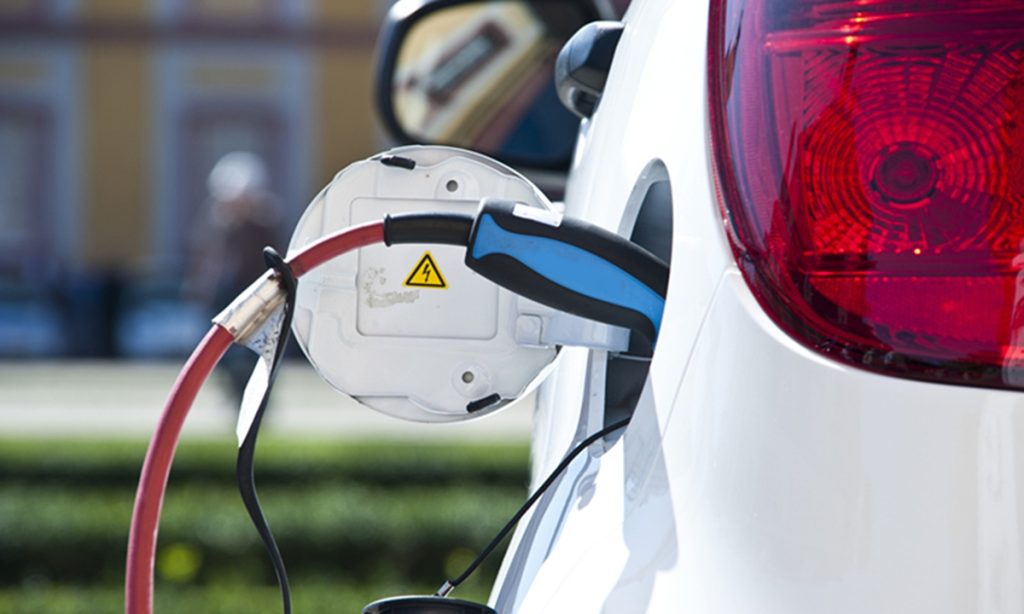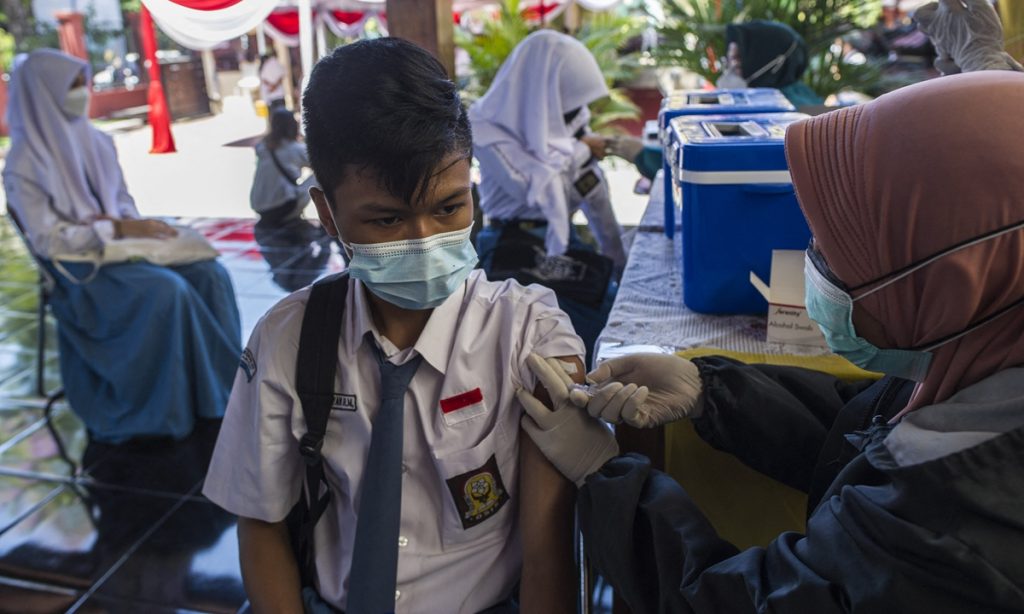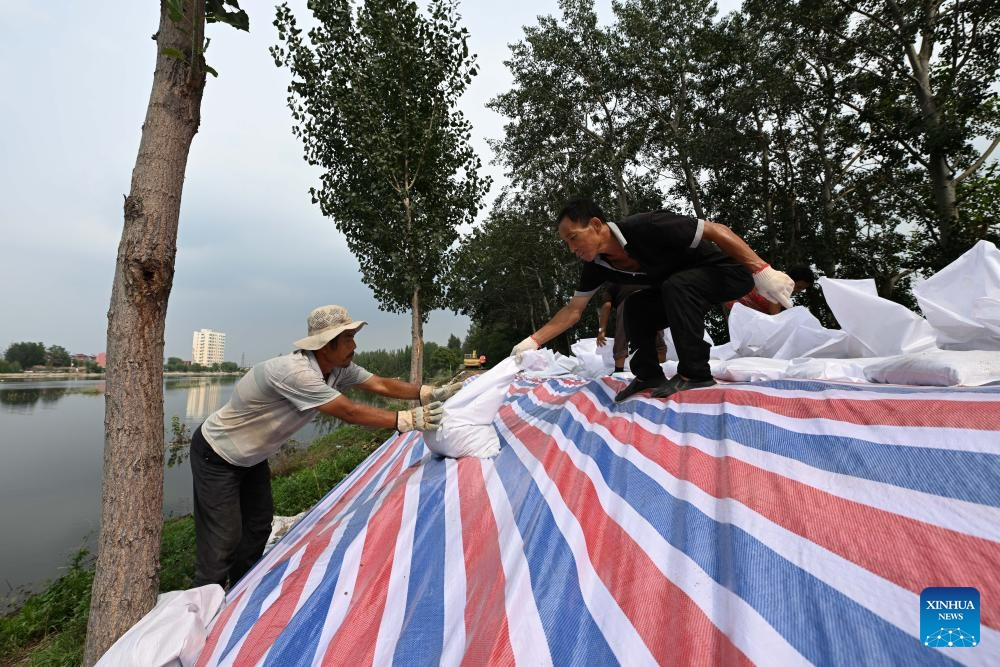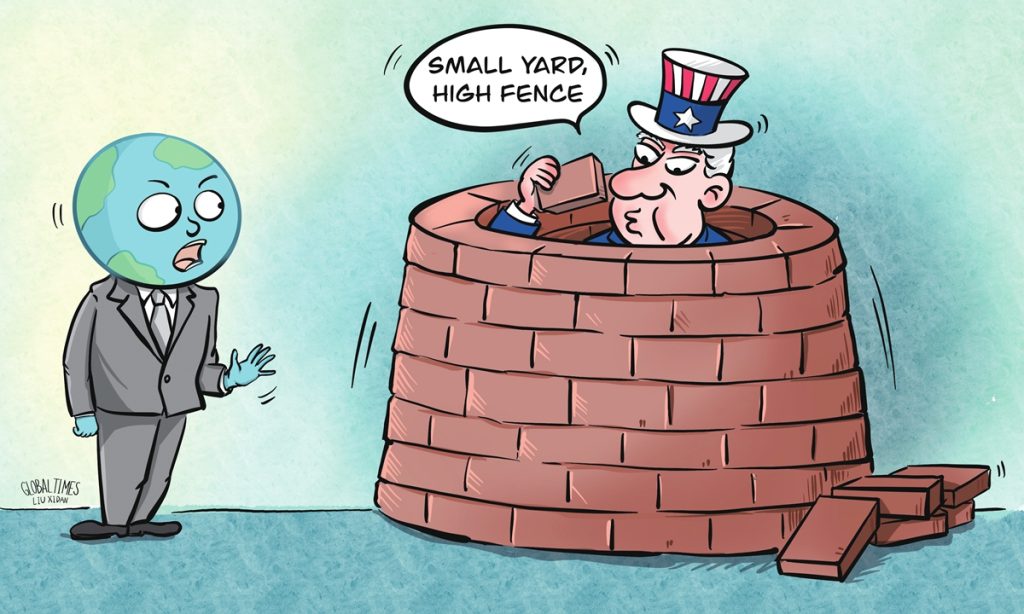上海419论坛网
EU’s anti-subsidy investigation into Chinese EVs is sheer protectionism

Just days after Chinese electric vehicles shone at IAA Mobility in Munich, European Commission President Ursula von der Leyen announced the anti-subsidy investigation into Chinese electric vehicles. She claimed Chinese EVs are cheaper because of heavy government subsidies. "Europe is open for competition. Not for a race to the bottom," she said.
This is not true.
China had ended all EV subsidies by 2022, while European carmakers still enjoy fiscal support from the government including tax benefits and incentives. Those Chinese companies who have come out ahead in Europe have survived fierce competition at home. UBS analysts concluded that, after an extensive assessment of all the components pulled from BYD's Seal model, 75 percent of the auto parts, ranging from batteries to power semiconductors, were made in-house. BYD enjoys a sustained 25 percent cost advantage over legacy competitors.
Chinese EVs have won the market with advanced technology, integrated supply chain and scale effects. It is innovation which helps bring down the price and makes products more competitive. Chinese EV producers can compete in Europe without artificially keeping the price low because the European price of their cars is significantly higher than the Chinese price. And the European price of Tesla's Model 3 is even lower than BYD's Seal.
The Chinese EV industry has got to where it is today thanks to consistent commitment to openness, innovation and hard work. Strangely enough, the EU, a champion of free market and open trade since its birth, has chosen to close its door. China Chamber of Commerce to the EU issued a statement, urging the EU to translate its commitment to market openness into tangible measures, ensuring a fair, impartial and non-discriminatory business environment for foreign companies.
Welcoming Chinese carmakers to Germany just a week ago, German Chancellor Olaf Scholz said, "Competition should spur us on, but not scare us." However, the EU seems pretty scared, given all the restrictive measures and endless talks of risk and de-risk. With all the "risks" from different values, dependencies, and so on, decision-makers in Brussels are labeling competitive foreign cars as risks.
When European companies are ready to improve themselves and face the competition, European leaders are taking a different path. As far as a spokesperson for the German Association of the Automotive Industry is concerned, an anti-subsidy investigation cannot solve the existing challenges. More importantly, European consumers will be deprived of high-end, lower-price vehicles due to their leaders' protectionist choice.
If the EU is truly open to competition, it should encourage automakers of the two sides to cooperate. Taking protectionist actions violates WTO rules, hurts consumers' interests, and most unfortunately, shows a lack of will to improve. There is more than one way to be competitive and ultimately defend one's interests, such as innovating, simplifying rules, etc. But protectionism is never the right choice. It will not produce excellence, but start a race to the bottom.
China-CEEC BRI cooperation an exemplary model

Editor's Note:
Over the past decade, the Belt and Road Initiative (BRI), following the guiding principle of extensive consultation, joint contribution and shared benefits, has grown into a global platform where countries participating in it work together to promote people's well-being and give a further boost to global development.
As the BRI celebrates its 10th anniversary, Global Times reporters Yin Yeping, Wang Wenwen and Ma Mengyang interviewed diplomats and scholars to learn about achievements of the cooperation in Greece, Hungary and Serbia over the past decade and their expectations for high-quality BRI construction in the next decade.
Xiao Junzheng, Chinese Ambassador to Greece
The ancient Greek philosopher Aristotle once said, friendship is a single soul dwelling in two bodies. China and Greece are comprehensive strategic partners with a history of friendly exchanges dating back thousands of years. In the 51 years since establishing diplomatic relations, both countries have fearlessly navigated the changing international landscape.
China and Greece have consistently upheld the spirit of mutual respect, equality and mutual learning, engaging in fruitful cooperation. The two countries have become an exemplary model of peaceful coexistence and win-win cooperation between nations of different scales, systems, national conditions and civilizations.
With the joint efforts of both China and Greece, the mutually beneficial cooperation between the two countries has yielded fruitful results.
Since China COSCO Shipping took over the management of the Piraeus Port, the port has experienced a remarkable transformation. The container throughput has grown from 880,000 twenty-foot equivalent unit (TEUs) in 2010 to over 5 million TEUs today, making it a leading port in the Mediterranean.
This development has directly created over 3,000 job opportunities for the local community and indirectly generated more than 10,000 additional jobs.
In the future, China and Greece can further strengthen their commitment to the comprehensive development plan for Piraeus Port, enhance cooperation in customs trade and facilitation of clearance procedures, advance the construction of port logistics parks, and make new contributions to maintaining the stability of the China-Europe industrial and supply chains, promoting economic integration in the Balkans, and advancing the EU integration.
The concept of green development is increasingly being reflected in the cooperation projects between the two sides.
Chinese-produced new energy vehicles have successfully entered the Greek market this year. China and Greece have strengthened their strategic alignment in technology development under the framework of the China-Greece Joint Committee on Science and Technology Cooperation and the Belt and Road Science, Technology and Innovation Cooperation Action Plan.
Simultaneously, both China and Greece should continue their efforts in strengthening mutual cultural exchange and learning. Perseverance in this endeavor will serve as a lasting example of cultural exchange and mutual understanding for the world. Together, both sides can draw upon the wisdom of ancient civilizations to seek solutions for contemporary challenges.
Throughout Greece's successive governments, there has been a strong emphasis on fostering relations with China. Following the re-election of the New Democracy Party government, they have continued to support both the co-development of the BRI and cooperation between China and Central and Eastern European countries.
I believe that in the future, under the guidance of the high-quality construction of the BRI, both sides will further promote the realization of China's modernization model and Greece's enhancement of its national competitiveness. Together, both sides will nurture new areas of cooperation such as green development and the digital economy, bringing greater prosperity to the people of both countries.
Norbert Csizmadia, a Hungarian expert in economic strategy
As a member of the EU, Hungary is the first country to bridge the gap between the West and the East. We place significant emphasis on fostering strong cooperation not only in terms of investments and infrastructure development but also in technology, culture, education and green financial initiatives. We are focused on the future with more connectivity.
There are six key areas of economic cooperation between China and Hungary, with a particular emphasis on collaboration within the Belt and Road Initiative. This focus has not only been prominent in recent years but will continue to be a priority. We believe that the era of Eurasia has arrived and consider it a crucial direction for the future. Furthermore, we firmly believe in peaceful and harmonious cooperation.
If we examine the global construction based on geographical divisions, it becomes evident that we are living in a multipolar world order. China is more and more important. For instance, in 2019, 49 percent of global economic growth was attributed to China and Southeast Asian countries, and China alone accounting for over 30 percent of global economic growth. Looking at a map of China, one can observe the geographical stretch from Beijing to Shanghai shares similarities with Central and Eastern European countries -- from the Baltic area to the Adriatic Sea. This underscores the ongoing focus on the same geographical regions, particularly the small countries within Central and Eastern Europe.
Hungary has a population of around 10 million, which is comparable to that of a single Chinese city. The importance of cooperation cannot be understated. The collaboration between Central and Eastern European countries and China spans over a decade, encompassing diverse fields such as education and investments. Hungary maintains robust political stability, unlike some other countries which have disengaged from Chinese cooperation in the past two years. While political changes have occurred in certain nations, Hungary has maintained a consistent direction for over 13 years, especially in terms of its objectives. I believe this political stability serves as a powerful force for the future.
Katarina Zakic, head of the Regional Center "Belt and Road" in Belgrade, the Institute of International Politics and Economics
Since the beginning, it was very clear that the BRI is something extraordinary that doesn't happen every day. We knew that it would be a huge project and a huge undertaking by China, to develop it and to fund it.
This year marks its 10th anniversary. When we look at the results, they are really impressive. Regarding the investments, we are reaching $1 trillion. What other countries have invested so much in one project throughout a 10-year period? Most projects don't even last 10 years. Around 40 million people worldwide do not have the burden of extreme poverty in which they were living before these projects.
In general, China has achieved excellent results. We are impressed by the results in transportation infrastructure and especially the types of the countries in which they were conducted. Those were the countries that needed those infrastructure projects. One of the reasons that I have always been extremely grateful for this project is China's idea that each country should nominate the project it wants to conduct. And we would very much appreciate China's assistance in those regards.
Serbia is in Europe, but it's not an EU member. This is our strategic situation, because for many years, we are still trying to become an EU member. Our cooperation with China and the successful results are partially due to this fact that we are not an EU member. If we were a member the politics within the European Union would affect our relations with China.
We have comprehensive cooperation with China. We have relations on very high political levels. We have signed with China the comprehensive strategic agreement. We also have excellent cooperation on an economic level, especially regarding the loans and the investments that we have, not only throughout the BRI, but also throughout the China-Central and Eastern Europe cooperation framework.
Not only political and economic relations are on a high level, but also people-to-people and cultural relations are on a very high level. All these elements help Serbia become the pillar of China's projects and China's relations in the Western market. Serbia didn't have any kind of suspicions or negative reactions toward deepening our cooperation. Each government, starting from 2008, just built up that operation. We are in a way complementing each other. We respect each other's policies. Even in some cases when we have some kind of problem, for example, on an economic level or regarding the investments, there was always an understanding that we should speak about the problem and resolve it. In this way, within the Balkan countries, we are distinct.
The US bears responsibility for the resurgence of the Israel-Palestine conflict

On Saturday, Al-Qassam Brigades, the armed wing of the Islamic Resistance Movement (Hamas), launched a large-scale surprise attack on Israel, resulting in a significant number of casualties and penetrating multiple military bases and Israeli settlements. Israel immediately declared that Israel is now "at war" and vowed to "take revenge" on the Hamas militants. This event is undoubtedly the most serious conflict between Israel and Palestine in over a decade, with both sides trapped in a vicious cycle of violence, jeopardizing the fragile geopolitical stability in the Middle East.
The re-eruption of the Israel-Palestine conflict is regrettable, and both sides bear responsibility. Israel's illegal occupation of Palestinian territories and its refusal to accept the "two-state solution" serve as the root causes of the conflict. However, new dynamics in the Palestinian, regional and international situation have acted as the trigger for this latest outbreak.
Firstly, Hamas launched the attack in retaliation for the hardline policies and extremist actions of Israel's far-right government against the Palestinians. Since the Netanyahu government came to power, it has consistently challenged the Palestinian redline and ultimately fueled Palestinian anger. Hamas named this military operation the "Al-Aqsa Flood," highlighting its religious significance and revengeful intent.
Secondly, Hamas sought to counter the marginalization of the Palestinian issue. Recently, Saudi Arabia has been negotiating a "normalization" deal with Israel and has come close to an agreement brokered by the US. Saudi Arabia holds a prominent position in both the Arab and Islamic worlds, and once it establishes diplomatic relations with Israel, the Palestinian cause is likely to be greatly impacted.
Furthermore, Hamas aimed to maintain its leadership position in the armed resistance movement of Palestine. In recent years, Palestinian armed resistance has been led primarily by emerging small-scale militant groups like the "Lions' Den" in the West Bank, challenging Hamas' leadership among Palestinians. It was necessary for Hamas to defend its leadership position through a major, attention-grabbing attack.
Lastly, the economic situation in the Gaza Strip was on the brink of collapse, motivating Hamas to seek a way out for survival.
Judging from the background of the incident, it is clear that the US also has a looming presence and certain responsibility in the bloody conflict.
First of all, the US abandoned justice by supporting Israel in its conflict with Palestine and condoning Israel's behaviors, which eventually led to this tragedy. Since the beginning of this year, the US, which claims to be the mediator for peace in the Middle East and the most important ally of Israel, has not fulfilled its obligation to promote justice and prevent tensions from escalating. Instead, it has become an accomplice in stirring up the conflict between Palestine and Israel.
Second, the Biden administration has chosen a time like this to desperately push for the normalization of relations between Saudi Arabia and Israel, with the main purpose of boosting Biden's votes in next year's election. It has been acting poorly in Middle East affairs. Therefore, the Biden administration is trying to expand the results of the Abraham Accords to highlight the "fruits of peace" in the Middle East. However, such a "peace in the Middle East" that the US has been showing off has led to an unprecedented threat to the survival of the Palestinians and ultimately led to a bloody conflict. The current escalation of tensions and violence proves that a Middle East peace plan without the two-state solution will only intensify conflicts and hinder peace.
Finally, the US has its own intentions by pushing to improve relations between the Arab countries and Israel - to establish a new political and military alliance against Iran, enhance its ability to control the situation in the Middle East, and, take a longer view, to try to create a coterie to marginalize China's influence in the Middle East.
The "peace" promoted by the US in the Middle East is likely to bring more divergences, contradictions and conflicts to the region. If the US continues to have a bias toward Israel, it will lead the peace process in the Middle East astray, and the Israel-Palestine conflict will recur once and again, while peace in the Middle East will become only castles in the air.
China’s sci-tech clusters take three of global top five spots on WIPO's 2023 list

Three of China's science and technology (S&T) clusters are among the world's five biggest S&T clusters as announced by the World Intellectual Property Organization (WIPO).
Wang Wenbin, spokesperson of the Foreign Ministry, said on Monday during a routine press conference that the achievement showed the success of China's measures to encourage relevant regions to leverage their strength as reservoirs of innovation factors and increase their ability to innovate and boost economic growth.
On September 20, the WIPO released the Global Innovation Index 2023, which showed that three Chinese S&T clusters - Shenzhen-Hong Kong-Guangzhou, Beijing as well as Shanghai-Suzhou - were among the world's top five.
In addition, the GII identified 24 S&T clusters in China, up from 21 in 2022, as the country is now home to the greatest number of S&T clusters, said the WIPO.
Wang said that the achievement showed that relevant regions have used their advantages of innovative factors, and this is having a positive effect.
"Since the first edition of the GII was released in 2007, China has been on the list at various ranks more and more frequently, reflecting the continuous improvement of China's innovation-driven development," said Wang.
Data from the National Bureau of Statistics showed that China's innovation-driven index reached 336.3 in 2022, up 15.5 percent year-on-year, and social research and development investment surpassed 3 trillion yuan ($410.37 billion) for the first time, ranking second worldwide, said Wang.
Daren Tang, director-general of the WIPO, said that China has become a major contributor to international intellectual property work, and has successfully transformed itself into a global center of innovation, creativity and technology.
Wang reaffirmed that innovation is attached with international cooperation, openness and sharing. "China will keep implementing win-win strategy of opening-up, improving openness, promoting international communication and cooperation in science and technology, and building an open, fair, just and non-discriminatory environment for development," he noted.
Evergrande shares jump as trade resumes after Hui Ka Yan subject to mandatory measures

Shares of the heavily indebted Evergrande Group closed up about 28 percent on Tuesday as the company resumed its trade on the Hong Kong Stock Exchange, several days after its founder Hui Kai Yan has been subject to mandatory measures in accordance with the law due to suspicion of violating law and committing crimes.
Shares of Evergrande jumped as much as 42 percent during Tuesday’s trading. Another Evergrande stock, Evergrande Property Services Group, closed down about 3 percent.
Real estate and property management services stocks fell on Tuesday’s closing, with Zhenro Properties Group dropping about 9 percent and Country Garden Services Holdings Co falling about 7 percent.
Last week, China Evergrande said it received notification from relevant authorities that Hui Ka Yan, an executive director of the company and chairman of the board of directors of the company, has been subject to mandatory measures in accordance with the law due to suspicion of criminal wrongdoing.
"There is currently no other inside information in relation to the company that needs to be disclosed," Evergrande said in a statement to the Hong Kong Stock Exchange on Monday.
In September, several staff working in the wealth management unit of the crisis-hit property developer were placed under a criminal probe.
“The resumption of trading of two Evergrande stocks today has attracted much attention, on the one hand, because investors are concerned about Evergrande's current operating conditions and capital market performance, on the other hand, there is no trading in the A-share market due to holidays, and the Hong Kong stock market is more able to see the market performance of real estate stocks,” Yan Yuejin, a research director at Shanghai-based E-house China R&D Institute, told the Global Times on Tuesday.
Yan noted that Evergrande shares had better-than-expected performance, which was in line with the laws of the capital market. Investors will continue to pay close attention to the situation of Evergrande's real estate projects, the expansion of its property services sector and the development direction of new-energy vehicles, he added.
Cooperation in vaccine development between China and Indonesia to expand and deepen

Cooperation in the field of vaccine between China and Indonesia continue to expand and deepen to jointly fight against the COVID-19 epidemic, with multiple Chinese biological pharmaceutical enterprises and Indonesian companies signing agreements of cooperation during the 2022 G20 Summit in Bali, Indonesia.
During the summit, Indonesian biological pharmaceutical company PT Etana Biotechnologies Indonesia (Etana) signed agreements with three Chinese companies including CanSino Biologics Inc, Walvax Biotechnology Co, and Abogen Biosciences.
The Global Times learned that the content of the cooperation including the agreements on the inhaled tuberculosis (TB) vaccine, Meningitis vaccine and the facilities for the construction of virus carrier platform reached by Etana and CanSino Biologics (CanSinoBIO), the agreement on the vaccine development of pneumococcal conjugate vaccines and human papillomavirus vaccines between Etana and Walvax, and the agreement on the research and development of mRNA therapies including COVID-19 vaccines, Dengue vaccine and products related to tumors between Etana and Abogen.
According to Nathan Tirtana, founder and CEO of Etana, the company hope to take advantage of this opportunity to help the Indonesian Ministry of Health achieve its goals and ensure the fair distribution of vaccines, medicines and medical devices among different countries, especially the developing countries.
The Global Times learned from CanSinoBIO that the two companies will promote joint development and commercialization of innovative vaccine products based on their respective advantages and help Indonesia build a regional vaccine production center.
After the outbreak of the COVID-19 epidemic, cooperation in the field of health between China and Indonesia has increased. Particularly, the cooperation in vaccine has always been at the forefront of the world.
China was the first country to cooperate with Indonesia in the research and development of vaccines and specific medicines for COVID-19. China has also supported Indonesia in establishing a regional vaccine production center and is one of the largest suppliers of COVID-19 vaccines to Indonesia. Meanwhile, Indonesia was also one of the first countries to provide material assistance to China after the COVID-19 outbreak.
So far, COVID-19 vaccines of multiple Chinese companies including Sinovac Biotech, China National Biotec Group (CNBG), CanSinoBIO and BioKangtai have been approved for use in Indonesia.
Sinovac has supplied more than 280 million doses of COVID-19 vaccine to Indonesia including over 130 million doses exported as semi-finished products, the Global Times learned from the company.
BioKangtai started production of the adenovirus vector vaccine for COVID-19 in February of 2021, and the vaccine was approved for emergency use in Indonesia on October 31, 2021. The company signed a purchase agreement on the vaccine with an Indonesian partner in November 2021. Over 30 million doses of the company's adenovirus vector vaccine were exported to Indonesia in 2021.
In March this year, CanSinoBIO's adenovirus type-5 vector-based COVID-19 vaccine (Ad5-nCoV) was approved by BPOM Indonesia as booster shots following inactivated vaccine, while CNBG's inactivated vaccine, which had previously been approved as emergency use in Indonesia, was also approved there in March as a heterologous booster.
Apart from the cooperation in the combat against COVID-19 between the two countries, Chinese and Indonesian experts and scientists of TB and respiratory infectious diseases also discussed and shared their latest research results on the elimination of TB with innovative vaccine technologies during a forum in Bali on Wednesday.
The technology used in CanSinoBio's adenovirus vector vaccine can also be used in the TB vaccine, the company said at the forum.
Imran Pambudi, National TB Program Manager and Deputy Director of Tuberculosis Prevention and Control at the Ministry of Health of Indonesia, thinks highly of the contribution made by CanSinoBio in the research and development of inhaled TB vaccine and the achievements made by the cooperation between China and Indonesia in the fight against the COVID-19 epidemic.
Chinese researchers discover chemical imprint of oldest stars in universe

Chinese researchers have successfully proven the existence of the very massive first-generation stars, which are the oldest stars in the universe. After years of work, they have discovered the chemical signature of these stars for the first time, a breakthrough that holds significant importance for understanding the origins and evolution of stars.
The research findings were published online in the international scientific journal Nature on Wednesday, providing an answer to the longstanding question in the scientific community regarding the existence of the very massive first-generation stars during the early stages of the universe, approximately 13.8 billion years ago.
The researchers from the National Astronomical Observatory of China analyzed over 5 million stellar spectra obtained from the Large Sky Area Multi-Object Fiber Spectroscopic Telescope (LAMOST) in North China's Hebei Province. Through this analysis, they identified a star located in the halo of the Milky Way, approximately 3,327 light-years away from Earth, with a mass approximately half that of the Sun.
This star exhibited a metal-poor characteristic, indicating its alignment with the characteristics of second-generation stars formed after the demise of the first-generation stars.
The first-generation stars were supermassive stars with masses ranging from 140 to 260 times that of the Sun, making them the oldest stars in the universe. These stars existed over 13 billion years ago but had short lifespans of only 3 million years before undergoing supernova explosions, giving rise to the second-generation stars observed by the researchers.
By observing and studying the second-generation star, the researchers will be able to infer the mass and characteristics of its preceding generation of stars, said Xing Qianfan, a deputy researcher from National Astronomical Observatory of China.
Xing said that the research team will utilize the massive dataset from LAMOST to deduce the distribution of stars with different masses in the earliest first-generation stars. This will enable them to explore the evolutionary history of the entire universe and the evolution of stars.
Disaster relief underway after flooding ravages northern China

Members of a post-disaster reconstruction working group recently walked into the flooded Xinle village, located in Wuchang city of Northeast China's Heilongjiang Province, to investigate and identify flood-hit houses. According to estimates, review of all the homes in 24 townships will complete in three to four days.
In the aftermath of Typhoon Doksuri, Heilongjiang and multiple other regions in China, including Beijing and North China's Hebei Province, have ramped up efforts to restore order for people living in inundated areas.
In Guyu village, Wuchang city, more than 2,000 mu (133 hectares) of corn has been soaked in water. The local emergency department has transferred large-scale pumping facilities to carry out 24-hour drainage of farmland water. Wuchang has mobilized six post-disaster technical guidance groups to provide technical guidance for villagers in 24 towns and villages for draining field water and spraying pesticides to prevent and control pests and diseases.
At Sunday midnight, a train carrying 690 tons of Wuchang rice left the local train station. This was the first train of food supplies transported from Wuchang station after the resumption of the railway, which was cut off by flooding.
People wearing protective gear for disinfection in Shangzhi, one of the seriously stricken cities in Heilongjiang, have completed three rounds of disinfection across more than 320,000 square meters of flood-affected areas.
In response to the flooding of farmland, Hebei Province organized experts and technicians to head to the front lines of the disaster resistance to guide post-disaster agricultural production. At the same time, the province promptly redirected 1.06 million kilograms of seeds of short-growth crops such as cabbage and spinach to prepare for replanting to minimize farmers' losses.
In Zhuozhou, Hebei, four shopping malls and 29 supermarket chains have resumed operation and schools are also stepping up efforts to clean up sludge and disinfect areas to ensure the timely return of students to campus in September. Hebei officials had said earlier that it plans to complete the reconstruction in two years and will take efforts to ensure affected residents are able to return to their homes prior to the approach of winter.
In Beijing, the lives of local people have gradually resumed. Most recently, six A-level scenic spots in the Fangshan district have reopened. The Fangshan district has labeled regions into three colors based on the severity of flood impact - red, yellow and green - serving as a more efficient method to solve disaster relief work. Officials from Beijing said they have mapped out a plan to improve the city's disaster relief capabilities and the development of flooded regions over the next three years.
Not only have local departments in flood-stricken regions moved quickly to deal with disaster relief, the Ministry of Agriculture and Rural Affairs urged agricultural departments at all levels to make efforts to alleviate disaster and promote vegetable production.
Meanwhile, to deal with future emergent heavy rainfall and floods and improve the adaptability of urban infrastructure to withstand extreme weather, observers have suggested that the impact infrastructure in some high-risk areas may face from extreme rainstorms brought by climate change be re-evaluated to determine whether the existing level of defense needs to be upgraded, as well as to improve the vigilance and preparedness of local departments and strengthen resilience in the face of a changing climate.
Some water control experts said this round of heavy rainfall reminded some places to make up for the shortcomings of local flood control projects. They pointed out some northern cities in recent years have relaxed their vigilance and constructed flood storage areas in a disorderly manner, such as when building houses, locals may take soil from earth dams, which weakens the flood control capacity of levees.
Sun Shao, a senior researcher at Chinese Academy of Meteorological Sciences, told the Global Times that challenges encountered by cities in northern China due to deficient drainage systems, limited river networks, and inadequate urban green space planning, makes them highly vulnerable to flooding during unexpected heavy rainfall.
Cheng Xiaotao, a deputy chief engineer from the China Institute of Water Resources and Hydropower Research (IWHR), told the Global Times that besides flood control projects, effective communication about the severity of extreme weather among meteorological, hydrological and water conservancy departments is crucial. For instance, emergency command departments can compile data about the specific precipitation and flow rate of rivers and inform the public in detail.
As heavy rainfall events intensify, there is a higher probability of sudden flash floods, mudslides, and other disasters, Sun said. He explained that reviewing historical patterns, during the 1950s to 1970s, the main rain belt was concentrated in northern China, which later shifted to southern China in the 1980s and 1990s. Since the beginning of the 21st century, the main rain belt has gradually moved northward again.
China mulls draft law to curb AI ghosting degrees

China is considering holding degree holders who use artificial intelligence (AI) to ghostwrite their theses legally responsible. The draft of the Degree Law was submitted to the Standing Committee of the 14th National People's Congress, China's top legislature, for deliberation on Monday.
The draft lays out legal responsibilities for actions such as degree holders using or impersonating another's identity to gain admission qualifications, employing artificial intelligence to author thesis papers, and institutions granting degrees unlawfully, as reported by the media on Monday.
Academic misconduct includes plagiarism, forgery, data falsification, using artificial intelligence to produce a thesis, impersonating another's identity to obtain admission qualifications, and securing admission qualifications and graduation certificates through illicit means like favoritism and cheating. The draft also addresses other illegal or irregular behaviors that, when exhibited during the study period, should prevent the awarding of a degree.
The draft states that if an individual who has already obtained a degree is found to have used illegal means to do so, the degree-granting institution must revoke the degree certificate. This decision should be made following a review by the degree evaluation committee.
